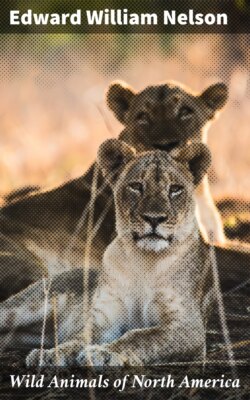Читать книгу Wild Animals of North America - Edward William Nelson - Страница 12
На сайте Литреса книга снята с продажи.
DID MAN LIVE THEN?
ОглавлениеTable of Contents
The geologically recent existence of this now vanished fauna is evidenced by the presence in the asphalt pits of bones of the gray fox, the mountain lion, and close relatives of the bobcat and coyote, as well as the condor, which still frequent that region, and thus link the past with the present. The only traces of the ancient vegetation discovered in these asphalt pits are a pine and two species of juniper, which are members of the existing flora.
There is reason for believing that primitive man occupied California and other parts of the West during at least the latter part of the period when the fauna of the asphalt pits still flourished. Dr. C. Hart Merriam informs me that the folk-lore of the locally restricted California Indians contains detailed descriptions of a beast which is unmistakably a bison, probably the bison of the asphalt pits.
The discovery in these pits of the bones of a gigantic vulturelike bird of prey of far greater size than the condor is even more startling, since the folk-lore of the Eskimos and Indians of most of the tribes from Bering Straits to California and the Rocky Mountain region abound in tales of the “thunder-bird”—a gigantic bird of prey like a mighty eagle, capable of carrying away people in its talons. Two such coincidences suggest the possibility that the accounts of the bison and the “thunder-bird” are really based on the originals of the asphalt beds and have been passed down in legendary history through many thousands of years.
